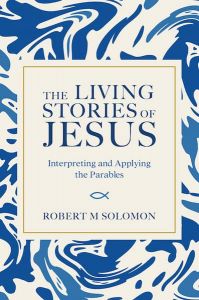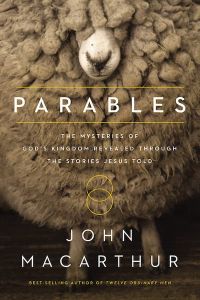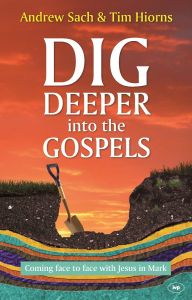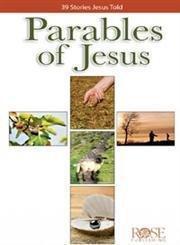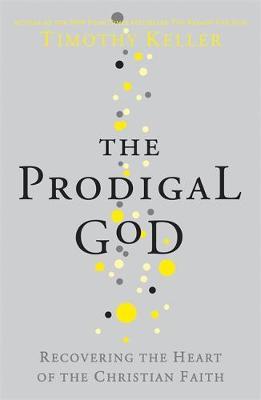There are three lessons I have learned in the course of my ministry regarding teaching and preaching on the Parables of Christ.
First, paying attention to details in the text have often elicited something interesting – congregations have remarked after hearing a textual detail mentioned in a sermon that they had never noticed it before. This often opens up new doors and windows into the story.
Second, culture does play an important role. I remember reading about a missionary who was preaching in Indian villages amid a great openness to the gospel. On one occasion he was preaching on the parable of the Prodigal Son. As he told the story, he noticed that his audience was listening to him with growing attention and interest. All was well until he came to the part where the father told his servants, “Bring the fattened calf and kill it. Let’s have a feast and celebrate” (Lk 15:23). When they heard this, the villagers reacted with disgust and began leaving. The sermon was aborted halfway. The missionary was shocked and puzzled. It slowly dawned on him that for many of the Indian villagers, eating beef was taboo. Could the missionary have adapted that detail in the story to fit the cultural framework of the listeners?[i]
In the same way, parables such as the Sower and the Seed may need further explanation to a modern audience that knows little of agricultural life. Having said this, we need to also realise that most of the stories of Jesus have a timeless ring to them, and thus still have a powerful way of impacting our thinking and choices.
Third, stories have a way of staying with us for a long time. The Old Testament has some parables too; for instance the story that the prophet Nathan told King David after the king had fallen into terrible sin (2 Samuel 12:1-7). It seemed that his usually sensitive conscience (as we can discern from his psalms) was asleep. Instead of clashing with the king headlong, Nathan chose a subtle pastoral method of telling a story of a gross injustice done in Israel. The story provoked a strong reaction in David, as he assumed his normal role as king and judge. He made the judgement against the wicked man in the story, only to be told by the prophet that David was that man. Nathan’s story gained entry into David’s conscience and brought about the repentance, about which he writes in Psalm 51. Samuel Lamerson makes a similar point when he observes that the power of story “‘takes the back door’ to communication and is able to speak to others in a way that propositional truth often simply cannot.”[ii]
The parables of Jesus have tremendous power to gain entry into our hearts and minds to bring about deep responses to God and personal and community transformation.
The article is excerpted from The Living Stories of Jesus (published by Cru Asia).
Article Contributed by Bishop Emeritus Robert M Solomon
Bishop Emeritus Robert Solomon served as Bishop of The Methodist Church in Singapore from 2000-2012. He had served previously as a medical doctor, church pastor, principal of Trinity Theological College and president of the National Council of Churches of Singapore. Dr Solomon has degrees in medicine, theology, intercultural studies, and a PhD in pastoral theology from the University of Edinburgh. He has contributed many articles to books, theological dictionaries and journals, and this book is his 50th book. He has an active itinerant ministry of preaching and teaching in Singapore and abroad.
[i] Cf. John T Seamands, Tell It Well: Communicating the Gospel Across Cultures (Chennai, India: Mission Educational Books, 2000), 129-130.
[ii] Samuel Lamerson, “Teaching the Parables to a Post-Modern Society,” Quodilbet 1, no. 1 (April 1999), http://www.quodlibet.net/articles/lamerson-parables.shtml.
Lessons on Teaching the Parables
-
Lessons on Teaching the Parables The Living Stories of JesusSpecial Price $26.01 Regular Price $28.90
-
Lessons on Teaching the Parables Parables: Mysteries Of God's Kingdom RevealedSpecial Price $31.41 Regular Price $34.90
-
Lessons on Teaching the Parables Dig Deeper into the GospelsSpecial Price $21.51 Regular Price $23.90
-
Lessons on Teaching the Parables Prodigal God (Chinese) 一掷千金的上帝Special Price $13.52 Regular Price $16.90
-
Lessons on Teaching the Parables Be Alive (John 1-12) - UpdatedSpecial Price $25.11 Regular Price $27.90
-
Lessons on Teaching the Parables LifeGuide Bible Study - ParablesSpecial Price $14.00 Regular Price $17.50
-
Lessons on Teaching the Parables How To Read The Bible As LiteratureSpecial Price $26.91 Regular Price $29.90
-
Lessons on Teaching the Parables Parables of Jesus, PamphletSpecial Price $7.11 Regular Price $7.90
-
Lessons on Teaching the Parables Cover To Cover BS- ParablesSpecial Price $9.81 Regular Price $10.90
-
Lessons on Teaching the Parables The Prodigal God : Recovering the heart of the Christian faithSpecial Price $19.71 Regular Price $21.90




